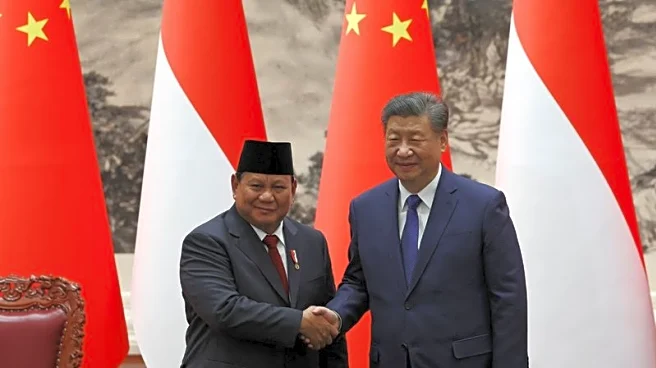What is the story about?
What's Happening?
The Vietnam Posts and Telecommunications Group (VNPT) has introduced a new fiber optic cable system connecting Vietnam and Singapore via a land route. This system, known as the Vietnam-Singapore Terrestrial Network (VSTN), spans 3,900 kilometers and utilizes Dense Wavelength Division Multiplexing (DWDM) technology. It offers a minimum capacity of 300 Gbit/s per wavelength, with potential expansion to 12 Tbit/s. Historically, Vietnam has relied on five submarine cables for internet traffic, which frequently experience disruptions. The VSTN serves as a backup, enhancing the resilience and security of Vietnam's telecommunications infrastructure. VNPT's control over the terrestrial system allows for quicker repairs compared to undersea cables, which require specialized vessels and favorable conditions.
Why It's Important?
The launch of the VSTN is significant for Vietnam's digital economy, as it strengthens connections to regional data hubs in Southeast Asia. This development is expected to attract private-sector investment in data centers and fintech ventures. By establishing a direct land-based route to major ASEAN hubs, the VSTN supports Vietnam's goal of increasing the digital economy's contribution to 20% of GDP by 2025. The enhanced infrastructure is crucial for industries like cloud services, fintech, and e-commerce, where stable cross-border connectivity is essential.
What's Next?
VNPT aims to create a multimodal transmission infrastructure ecosystem via land, sea, and space. The VSTN's establishment is a step towards this goal, potentially leading to further expansion and integration of Vietnam's telecommunications systems. The increased connectivity may also drive growth in digital services and cross-border trade, benefiting various sectors of the economy.
Beyond the Headlines
The VSTN's impact extends beyond immediate economic benefits, as it may influence Vietnam's geopolitical standing in Southeast Asia. By reducing reliance on submarine cables, Vietnam enhances its telecommunications independence, potentially affecting regional dynamics and partnerships.
AI Generated Content
Do you find this article useful?













